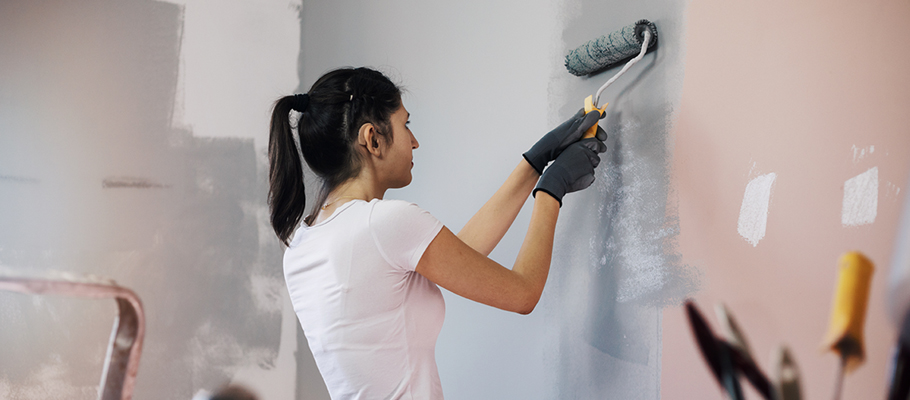Whether they did it themselves or hired a pro, Americans spent $420 billion on home improvements during 2020. And that level of spend is expected to continue. In fact, The Joint Center of Housing Studies of Harvard University predicts home remodeling, in particular, will have strong growth in 2021.
When you consider the sheer volume of home improvement projects – and the natural resources required to produce and transport all of those home improvement materials – it’s easy to see why people are looking for remodeling options that reduce their environmental impact.
What is green remodeling?

In general, green remodeling means thinking about your remodeling project with its environmental impact in mind – whether that’s waste reduction and recycling, energy efficiency, or using salvaged or local materials.
You might be interested in one of these areas more than others. What matters most is that, whether you’re doing a slight refresh or a complete remodel, there are a variety of options available to eco-conscious consumers.
Reduce waste and recycle materials

About 70 percent of waste from renovation and demolition projects ends up in landfills. But, many of these materials can be salvaged, reused, or recycled. Common building materials to salvage for reuse include appliances, cabinets, doors, hot water radiators, light fixtures, windows, and wood flooring and trim. There are several for-profit and nonprofit organizations that accept usable household building materials in the Twin Cities.
When building materials can’t be salvaged for reuse, recycling them rather than sending them to a landfill is a great option. There are construction and demolition waste processing facilities in the Twin Cities that recycle materials such as asphalt, metals, and wood. See the list of building material reuse organizations in the Twin Cities (PDF). Contact the organization directly to find out what types of materials they accept for reuse.
Projects may also reveal hazardous materials, such as asbestos, items containing mercury or lead, like fluorescent light bulbs and batteries, appliances, electronics, paint, and pesticides. Managing these types of hazardous wastes properly is important in protecting public health and the environment and is required by law.
You can bring household hazardous waste to a Hennepin County drop-off facility in Bloomington or Brooklyn Park for proper disposal.
Learn more:
- Hennepin County hazardous waste drop-off locations
- Hennepin County - Building material salvage, reuse and recycling for homeowners
Related reading: Reducing waste during home remodeling
Use energy-efficient materials and practices

Energy-efficient appliances are a great place to start when exploring green remodeling; however, there are several other areas of your home where you can save on energy use and costs as well. It’s about making smart design choices in every aspect of your remodel – from the size of the space, to which direction your windows face, to the exterior color of your home and the landscaping you choose.
Check out the Environmental Protection Agency’s Energy Star program to measure your home’s energy use, compare options for energy-efficient household items, and find other tips for saving money and conserving energy. If you are working with a designer or contractor, share your energy-efficiency goals early and ask for frequent updates.
In some cases, you’ll save money upfront (especially if you take advantage of incentive programs). In other cases, your savings will show up longer-term as green remodeling choices pay for themselves over time.
Related reading: EPA’s Energy Star product finder
Incorporate salvaged and local materials

When designing your project, it is important to close the waste loop by incorporating materials that are salvaged, contain recycled content, or produced locally. Many salvage and antique retailers in the Twin Cities sell durable, one-of-a-kind building materials and interior fixtures that were salvaged from other projects and are looking for a second life.
Light fixtures, cabinets, and sinks are just a few examples of items you could buy salvaged and incorporate into your project. See the list of building material reuse organizations in the Twin Cities (PDF).
You can also find many materials made with recycled content, including glass tile, carpet, and latex paint. Plus, looking for locally produced materials produced reduce your environmental impact by reducing transportation emissions.
Search local retail swap websites like Facebook Marketplace or Craigslist to find unique items for your project. A bonus: you can even sell or give away your old materials on the same page!
Interested in starting a green remodeling project?

There are a variety of resources to help you design and plan your next project. For example:
- Schedule a home energy audit to identify how to make your home more energy-efficient
- Check out Minnesota Pollution Control Agency’s building material reuse and recycling page
- Find out if your project is eligible for a Hennepin County deconstruction grant to salvage building materials
Just deciding to remodel rather than rebuild is a green choice. So, if you’re willing to take it even further and incorporate green remodeling practices, you’re making a significant impact.
